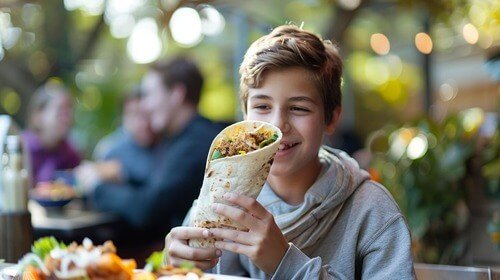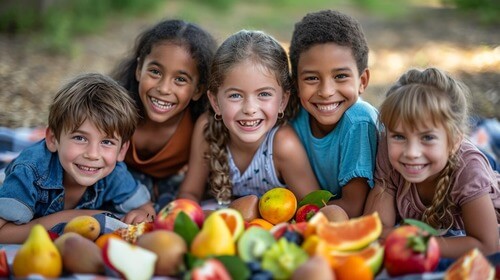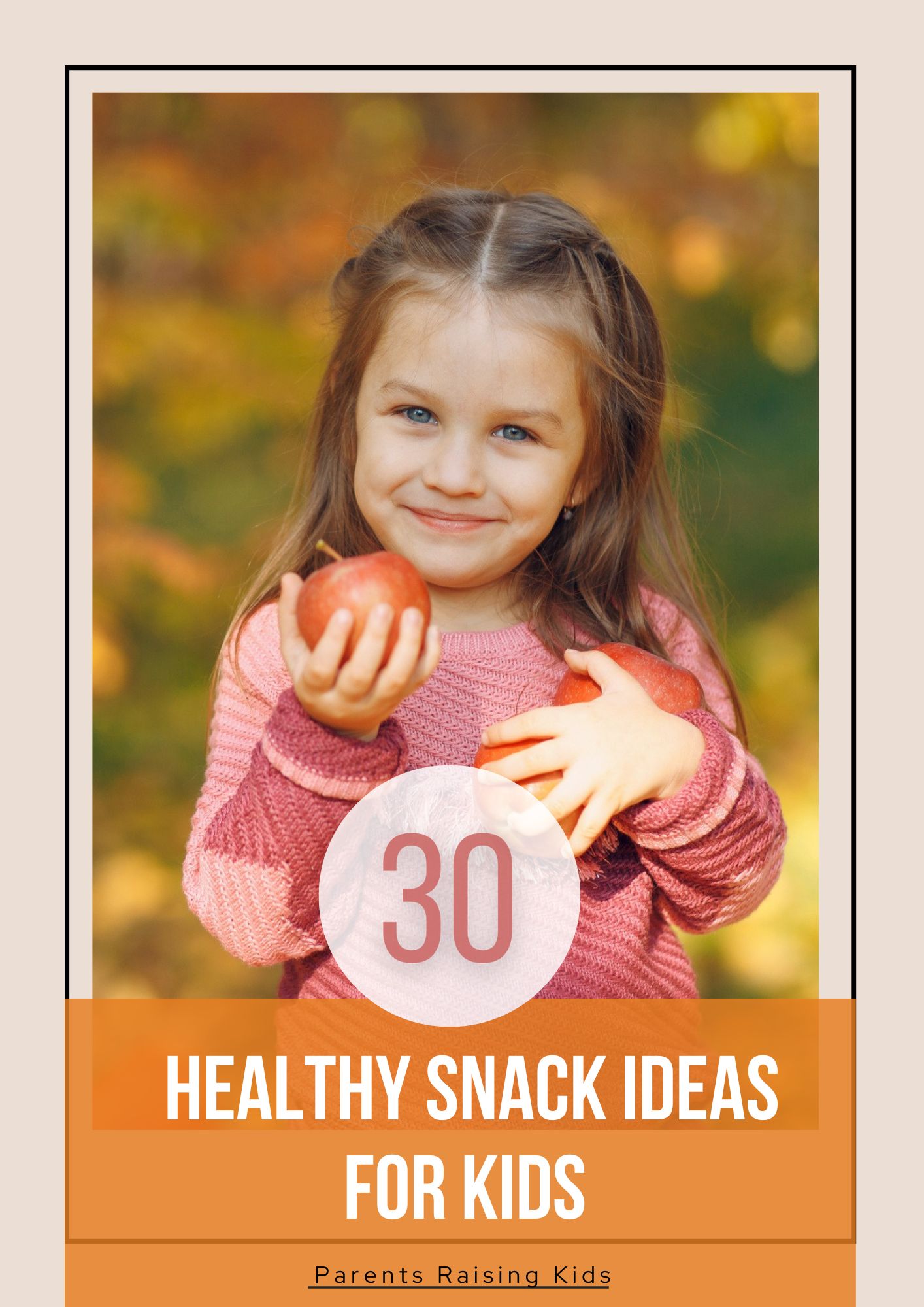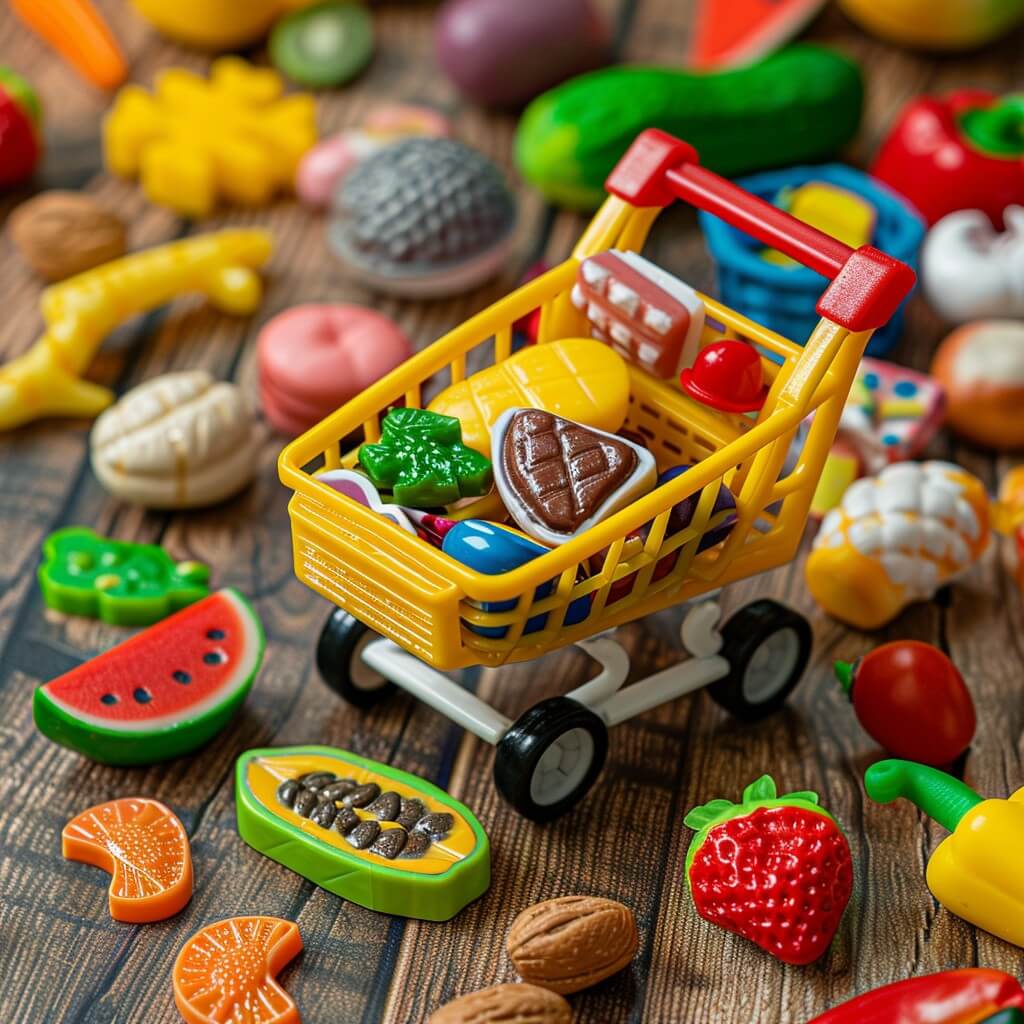What Do Kids Eat? Isn't That the $64,000.00 Question.
When it comes to this question, “What do kids eat?”, the answer can be as varied as the children themselves.
From toddlers to teenagers, a kids eating habits are impacted by their age, culture, family preferences, and more importantly individual tastes.
 A young boy outside eating a soft shelled taco.
A young boy outside eating a soft shelled taco.Understanding what kids typically eat at different stages can help parents guide their way through the often tricky world of childhood nutrition.
What Do Kids Eat as Infants and Toddlers
Infants will consume breast milk or formula, providing them with all the necessary nutrients they need to get started on their growth and development.
As they transition to solid foods around six months, their diet starts to include pureed fruits, vegetables, and cereals.
By the time they are toddlers, their food preferences begin to emerge.
Common Foods for Infants and Toddlers:
- Breast milk or formula: The main source of nutrition for infants.
- Pureed fruits and vegetables: Apples, pears, carrots, and sweet potatoes.
- Cereals and grains: Rice cereal and oatmeal, whole grain bread/toast.
- Finger foods: Small pieces of soft fruits, cooked vegetables, and cereals.
- Dairy products: Yogurt and small amounts of cheese.
What Do Kids Eat as Preschoolers
Preschoolers (ages 3-5) often have more adventurous tastes but can also be quite picky.
As they continue to develop their tastes for different foods include those that are familiar to them and those that are new.
 Young boy holds a piece of pizza to his nose, while laughing.
Young boy holds a piece of pizza to his nose, while laughing.Common Foods for Preschoolers:
- Fruits: Apples, bananas, berries, and grapes.
- Vegetables: Carrots, cucumbers, peas, and corn.
- Proteins: Chicken, fish, beans, and eggs.
- Grains: Whole grain bread, pasta, and rice.
- Dairy: Milk, cheese, and yogurt.
- Snacks: Crackers, fruit snacks, and granola bars.
What Do Kids Eat as Elementary School Children
By the time kids reach elementary school, their eating habits are influenced by school lunches and snacks.
Among healthier foods they also have the choice of processed foods and sugary snacks.
Common Foods for Elementary School Children:
- Breakfast items: Cereal, oatmeal, and toast.
- Lunch options: Sandwiches, wraps, salads, and school cafeteria meals.
- Snacks: Fruit, yogurt, granola bars, and chips.
- Dinner: A mix of proteins (chicken, beef, fish), vegetables, and grains (rice, pasta).
- Desserts: Cookies, ice cream, and fruit.
What Do Kids Eat as Teenagers
Teenagers often have more freedom to make their own food choices and may eat more meals outside the home.
Their diets can vary widely depending on their level of physical activity, social influences, and personal preferences.
Common Foods for Teenagers:
- Quick meals: Pizza, burgers, and sandwiches.
- Healthy options: Salads, grilled chicken, and smoothies.
- Snacks: Chips, candy, fruit, and nuts.
- Beverages: Soda, energy drinks, and water.
- Convenience foods: Frozen meals, instant noodles, and fast food.
 Teens and other people at McDonald's eating hamburgers and french fries and drinking pop, all looking very happy.
Teens and other people at McDonald's eating hamburgers and french fries and drinking pop, all looking very happy.Regional and Cultural Differences
What kids eat also depends heavily on regional and cultural influences. Traditional foods play a role in a child’s meal in many cultures.
- Asian Cuisine: Rice, noodles, tofu, and a variety of vegetables and seafood.
- Mediterranean Diet: Olives, cheese, bread, and fresh vegetables.
- Latin American Fare: Beans, rice, tortillas, and a range of fruits like mango and papaya.
Special Dietary Needs
Some children have special dietary needs due to allergies, intolerances, or medical conditions.
If your child has special dietary needs you will need to be extra vigilant about what your kids eat to be sure they are getting the nutrients they need without exposure to harmful foods.
Common Special Diets:
- Gluten-free: For children with celiac disease or gluten intolerance.
- Dairy-free: For those with lactose intolerance or a dairy allergy.
- Nut-free: For children with nut allergies.
- Vegetarian or Vegan: For families who follow plant-based diets.
Addressing Nutritional Concerns
You may often worry about whether your child is getting enough nutrients, especially if they are picky eaters.
Serving a balanced diet with as many foods from all the food groups is more than necessary.
 Woman in grocery store with young boy and looking threw the produce section.
Woman in grocery store with young boy and looking threw the produce section.Tips for Ensuring Nutritional Balance:
- Offer a variety of foods: Encourage children to try different foods to be sure they get a range of nutrients.
- Be patient with new foods: It can take several attempts for a child to accept a new food.
- Involve kids in meal planning: Let your kids help you with the shopping and cooking so that they become more interested in eating healthy foods.
- Limit sugary and processed foods: These should be occasional treats rather than daily staples.
- Ensure regular meal and snack times: Consistent eating schedules can help regulate appetite and nutrition intake.
What Should Kids Eat?
While understanding what kids eat gives a snapshot of current eating habits, you may also want to know what your child should be eating.
For kids a balanced diet includes fruits and vegies, whole grains, proteins and dairy.
Each age group has specific nutritional needs, but the core principles of healthy eating remain the same.
Guidelines for a Healthy Diet:
- Fruits and Vegetables: Aim for five servings a day.
- Whole Grains: Choose whole grain bread, pasta, and cereals.
- Protein: Include lean meats, beans, and nuts.
- Dairy: Ensure adequate calcium intake through milk, cheese, and yogurt.
- Healthy Fats: Incorporate avocados, nuts, and olive oil.
 Five young children sitting behind a selection of fruits while smiling.
Five young children sitting behind a selection of fruits while smiling.As you know, what a child eats depends on their age, culture and personal tastes, but the end goal is to provide them with a balanced diet that supports growth and development.
When you offer choices, you are making meal times enjoyable and helping your kids to establish healthy eating habits.






























New! Comments
Have your say about what you just read! Leave me a comment in the box below.